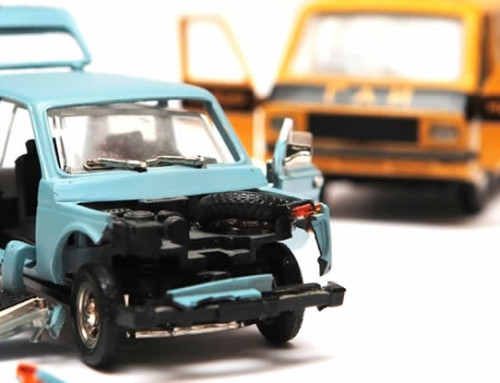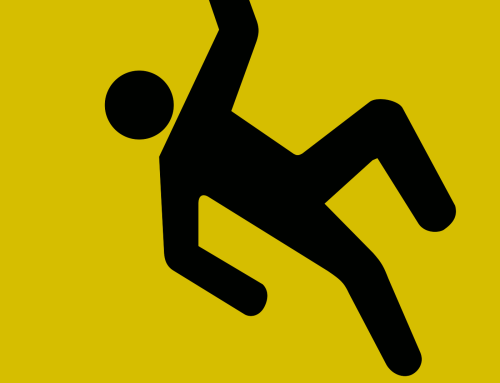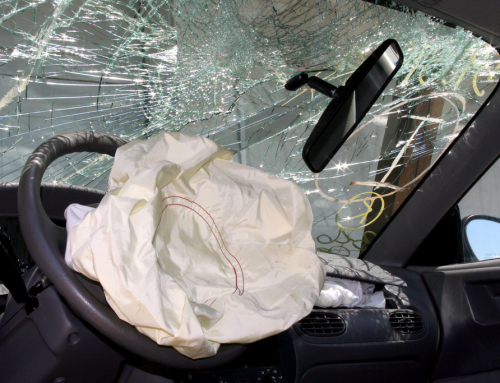Originally published in Trial Bar News, Vol.34, Issue 7, Aug./Sept. 2011
By Marianne S. Johnson, Esq.
Effective January 1, 2011, the Legislature’s newest attempt to streamline the civil jury process launched an interesting alternative for those civil cases that fall into that problematic void: too big for small claims court, but not worth a three-to-five day jury trial. Specifically, the new Expedited Jury Trial Act creates something akin to binding arbitration, in front of eight jurors. I recently tried the very first expedited jury trial in San Diego county. The experience itself was fascinating and even invigorating, to put on the entire case in one day. However, I realized that, in order for the EJTA to be effective and meet its goal of a one day trial, it requires the perfect storm of a case: (1) very few issues in dispute, such as damages only; (2) no more than two or three witnesses per side, including experts; and (3) opposing counsel who are not at “war” with each other.
The Expedited Jury Trials Act is set forth in Code of Civil Procedure §630.01 et seq., the California Rules of Court 3.1545 et seq., and provides for a “consensual, binding jury trial before a reduced jury panel and a judicial officer.” CCP §630.01(a). The stated goal is to complete an expedited jury trial in one full trial day. See CRC Rule 3.1550.
The Procedural Differences
Both sides must agree to an expedited jury trial under the Code, i.e, it is not ordered or imposed by the court. CCP §630.03. The parties execute a joint Consent Order to Expedited Jury Trial, agreeing to the basic guidelines under the Code, subject to being customized by stipulation of the parties. A sample consent order is available with the court’s online forms. The basic procedures for an expedited jury trial are as follows:
1. All parties waive all rights to appeal and post-trial motions (no directed verdicts, motions to set aside verdict, or new trial for inadequate or excessive damages). CCP §630.03(e)(2)(A);
2. Each side will have up to three (3) hours to present its case. CCP §630.03(e)(2)(b). This includes opening statement, closing arguments, and cross-examination of witnesses. See CRC Rule 3.1550;
3. The jury is composed of eight (8) jurors or fewer, with no alternates, and each side is limited to three (3) peremptory challenges (plus one additional peremptory if the court determines there are more than two sides). CCP §630.03(e)(2)(c) and CCP §630.04;
4. A vote of six (6) of the eight (8) jurors is required for a verdict, and the verdict is binding, subject to any “written high/low agreement.” CCP §630.07(a) and (b). A “high/low agreement” is defined in the Act. CCP §630.01(b);
5. Approximately one (1) hour will be devoted to voir dire, with fifteen (15) minutes to the judge, and fifteen (15) minutes to each side. CRC Rule 3.1549.
Post-trial motions relating to costs and attorneys fees, motions to correct a clerical error in the judgment, and motions to enforce judgment are not waived and expressly reserved by definition in the EJTA. CCP §630.01(c). An appeal or motion for new trial is limited solely to judicial or juror misconduct, corruption or fraud. CCP §630.09. Of course, the EJTA does not restrict the amount of time a jury takes to deliberate. CCP §630.05.
The standard rules of evidence, including the right to issue subpoenas, notices to appear, and presentation of evidence or objections to evidence still apply to an expedited jury trial, but are clearly subject to modification by stipulation of the parties. Pretrial submission guidelines and exchanges of evidence, witness information, and exhibits are spelled out in CRC 3.1548, and mirror the rules for exchange applicable to a standard Joint Trial Readiness Report for all jury trials. These deadlines also presume that the parties will comply with CRC 3.1547 (a) by submitting the proposed Consent Order for an expedited trial “no later than 30 days before any assigned trial date.”
However, in my case, the defendant did not agree to an expedited jury trial until after the Trial Readiness Conference and just prior to the actual trial date. A regular 3-5 day jury trial was indicated by the parties at the TRC, although plaintiff’s counsel reserved the right to convince the defense to stipulate to the new procedure by the time of trial call. But the procedure was new to the judge also, and therefore he was more accommodating. Any attorney considering the expedited jury trial should carefully review the deadlines and timing requirements of CRC Rule 3.1548 et seq.
The Eye of the Storm: Cooperation
The key to proceeding with an expedited jury trial is cooperation between counsel. If opposing counsel cannot agree on the time of day, let alone fault, or you anticipate a slew of motions in limine and fighting over every jury instruction, then a one day jury trial is simply not possible. It can’t be done, without stipulations to facts and/or issues, and a willingness to streamline the presentation of evidence. If you take the one hour for voir dire, three hours per side, the standard lunch recess, mid-day breaks, the jury instruction conference and “do the math”, there are not enough hours in the standard court day to try the case from 9:00 a.m. to 4:30 p.m.
Once you have your date set for trial, you must request the judge to call for a panel of jurors to be “assigned” to his/her courtroom the afternoon before trial. It is imperative that voir dire begin at 9:00 am, and you are not waiting for jurors to proceed through orientation downstairs.
In my auto accident case, the defendant stipulated to liability for running a red light. Although the defendant called a defense medical expert, they did not seriously dispute the amount or necessity of the chiropractic medical expenses or evidence. Pre-trial discovery during the case was not contentious, and there was virtually no wrangling over the CACI jury instructions. There were no motions in limine filed by either side, other than the standard ones “deemed given” pursuant to San Diego local court Rule 2.1.18.
Given the stipulations on liability in my case, the plaintiff and his only treating physician were called as witnesses. Defendant relied almost exclusively on the testimony of its defense medical expert. If you need more than one expert witness to testify, you will not bring your case in under the wire, unless the time allotted each side is extended by stipulation of the parties.
The conference with the judge to go over jury instructions took us eight (8) minutes, not the typical twenty (20) minutes or more. Cooperation and adequate meet and confer efforts in advance of the trial date clearly paid off. It was the perfect combination of simple and limited issues, plus professional courtesy, that allowed us to submit the case to the jury by 4:28 p.m. that same day.
However, the trial judge was not keeping a stopwatch on us, largely due to the newness of the expedited procedure, and therefore an experiment to see if in fact it could be done. The judge made it clear some leeway on time would be given if asked. Again, cooperation among the players is the key. If a party needs more time with witnesses, for example, the parties can stipulate to additional time, i.e., an extra hour the following day.
Furthermore, if your case requires computer-generated graphics, overhead projections, or videos, you should anticipate needing more time. Modern technology can be amazing, but it can also be a curse, full of glitches, technical difficulties, and set-up problems that delay smooth presentation of the case. Both the EJTA and the Rules of Court allow the parties to bend the rules by stipulation to suit them, with the goal of trying the case within one court day. CRC Rule 3.1550.
The Consequences, Good and Bad
There are several significant advantages to a one-day jury trial. First, the costs of trial are limited to one day of juror fees and court reporter fees, roughly $570, as opposed to that amount times three days or more. You may have decided to save money and time by trying the case the old-fashioned way, with blowups and poster board. You have limited your exhibits and witnesses to those absolutely necessary, and not advanced fees for “filler” or foundation witnesses. Being more cost-effective, particularly on a lower-value case, benefits both you and your client.
Second, an expedited trial can be scheduled with the trial judge like a bench trial, with a date certain on the calendar. You may avoid being assigned to “the wheel” and the waiting around (unable to schedule little else in your practice) for two weeks for a courtroom to become available, while your witnesses come up with ways to make themselves difficult to schedule. After all, time is money too.
Third, an expedited trial gives your plaintiff “their day in court” in front of a jury of their peers, in a cost-effective manner, and provides them with that often needed catharsis that they may not get from mediation, a settlement conference, or a small claims hearing, along with the “closure” that everyone wants, similar to a binding arbitration. And the jurors appreciate their service being limited in time and effectively used. After the verdict, my jurors unequivocally stated that they could not imagine the case grinding out for two or more days. They liked the shortcuts, and we all want our jurors to be happy, right?
Now for the bad news. Certainly, if you find yourself compromising advocacy for time, then you’ve made the wrong choice with an expedited trial. Although my jury seemed to be unaware of the warp-speed at which we were proceeding, there were times when I definitely felt rushed. You cannot help looking at your watch more often than normal, and worrying about what you are forgetting in your efficiency.
If both sides stick to the game plan of giving the case to the jury by the close of business, you are guaranteed to be making your closing arguments at about 4 o’clock in the afternoon, when you know your jury is falling asleep and thinking more about rush hour traffic, than your traffic collision. In addition, you do not have the luxury or strategic ability to re-think your closing argument overnight. Of course, you had it all planned out before you started, but now you have to tailor it “on the fly” to fit what actually transpired in trial, without any real time to sit and reflect.
Finally, by waiving appeal and most of the post-trial motions, you lose your leverage to broker a post-trial deal in the event that the verdict is not everything you had hoped it would be. This can be a particular concern where written Section 998 offers of compromise were made in the case.
Conclusion
The Expedited Jury Trial Act presents a viable alternative to a jury trial, that will save time and money, but requires everything to fall into place, neatly and precisely, in order to work. Yet, the neat and precise cases usually settle, while the messy ones tend to go to trial. The EJTA seems most keenly suited to automobile accidents, since liability is often admitted in them. However, if the issues are equally limited in premises or products cases, or even in contract disputes, a one-day jury trial may be the best way to weather the trial storm.




Leave A Comment